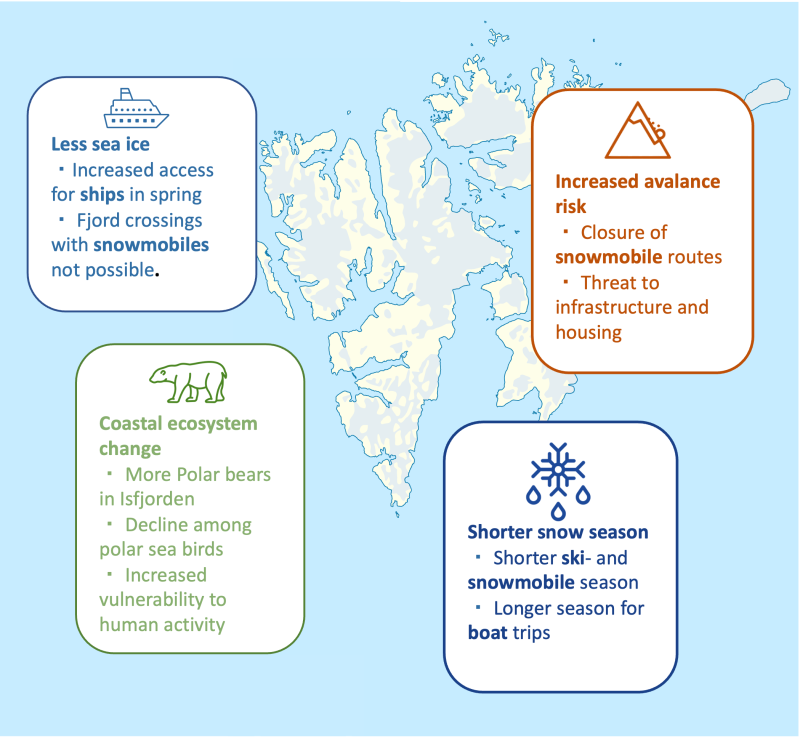Impacts of climate and environmental change on tourism in Svalbard
This report reviews and summarizes the existing literature on climate change and ecosystem change on Svalbard, with particular focus on the consequences of rapidly changing climate and environmental conditions for tourism in the archipelago. Svalbard, much like the rest of the Arctic, is experiencing rapidly changing climate and environmental conditions at a rate that far surpasses other regions of the world. One of the major impacts experienced so far is the disappearance of land fast ice in the fjords of Western Svalbard in the late winter and spring months. This has opened a new season for cruise- and expedition cruise tourism in late winter and spring and has also extended the summer season. Climate change is also heightening the risk of natural hazards, which will likely have significant consequences for all human activity on Svalbard. Climate change is projected to accelerate permafrost thaw, exacerbate risk of avalanches and landslides, increased precipitation will lead to increased flood risk. Increased avalanche risk, for example, is likely to cause more frequent closure of major inland snowmobile routes, such as the one between Barentsburg and Longyearbyen. Economic opportunities for the tourism industry are also increasingly constrained by the need to take climate change impacts and environmental requirements into account, particularly climate change induced vulnerability of ecosystems.

